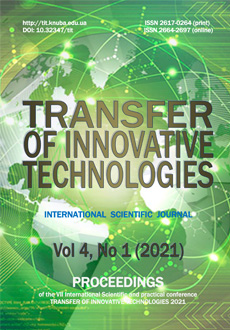Aspekty medyczno-prawne dotyczące żywienia w kontekście bezpieczeństwa ekologicznego żywności
DOI:
https://doi.org/10.32347/tit2141.0207Keywords:
medyczno-prawne dotyczące, kontekście bezpieczeństwaAbstract
They know better all the features and risks of their business, and therefore they must be responsible for their safety. Implementation of the main elements of the new food safety control system in Ukraine takes place through the implementation of a permanent procedure based on the HACCP principles [1−3]. Now, entrepreneurs must identify potential hazards and risks of the production process and capacities, as well as take all necessary measures to minimize them. Together with greater responsibility the entrepreneurs receive more freedom. For example, the state cannot require the factory to have light walls above 1.8m. The quality is a subjective and personal concept, and safety requirements must prevent the harmful effects of products on the health of the consumer. At the same time, Ukrainians need to know what they are consuming. Therefore, lawmakers are currently working on a draft law on providing information to consumers about food. The new system to which Ukraine passes allows a clear distinction to be drawn between liabilities for causing harm due to the consumption of a dangerous product. According to the concept of the food chain «from the lawn to the table», the quality of the product must be baked at each stage of the commodity circulation, and each businessman is responsible for the safety of the food within its activities: the manufacturer − within the limits of production, the carrier − within the scope of transportation, the store − within storage and sale. Consequently, at each point of the food chain, the entrepreneur knows where the raw material or product came from and where it comes next. If the customer receives a health hazard product, this system helps to identify: who is responsible for causing harm. In this chain, there should be feed for productive animals. The draft law «On Safety and Hygiene of Forms» has already been developed and registered. If the feed contains harmful substances, they will continue to enter our body through products made from animal meat.
References
Lugovska, O.А. & Sydor V.M. (2016) Use emulsions in production restaurants and food industry. Food and environment safety: journal of faculty of food engineering, XV, 312-322.
Lugovska, O.А. & Sydor V.M. (2015) Influence of hydrocolloids in oil-in-water emulsions during storage of food. Food and environment safety, XIV, 84-88.
Lugovska, O.А. & Sydor V.M. (2015) Aromatic emulsion beverage catering and industrial production. Journal of FOOD and PACKAGING Science, Technique and Technologies, 7, 19-23.
Wysoczańska J. (2014) Praca magisterska. Uniwersytet Warszawski Medyczny.
Downloads
Published
How to Cite
Issue
Section
License

This work is licensed under a Creative Commons Attribution-NonCommercial-NoDerivatives 4.0 International License.
Our journal abides by the CREATIVE COMMONS copyright rights and permissions for open access journals.
Authors, who are published in this journal, agree to the following conditions:
1. The authors reserve the right to authorship of the work and pass the first publication right of this work to the journal under the terms of a Creative Commons Attribution License, which allows others to freely distribute the published research with the obligatory reference to the authors of the original work and the first publication of the work in this journal.
2. The authors have the right to conclude separate supplement agreements that relate to non-exclusive work distribution in the form in which it has been published by the journal (for example, to upload the work to the online storage of the journal or publish it as part of a monograph), provided that the reference to the first publication of the work in this journal is included.




